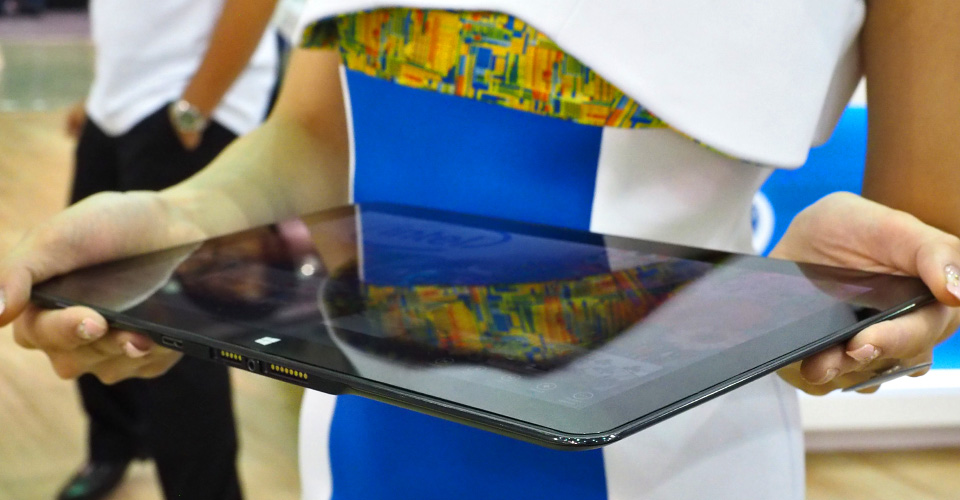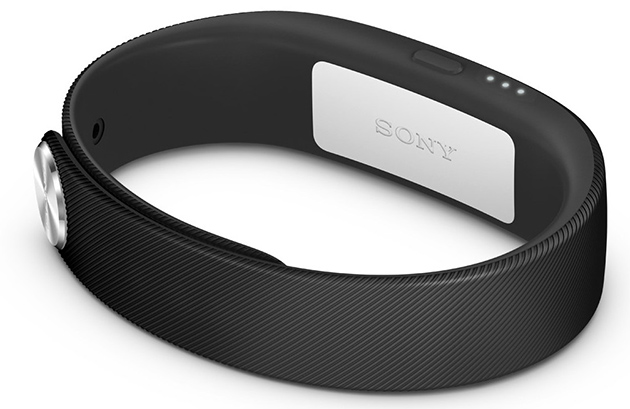Sections
Pick of the week
- Steven Sinofsky’s wrote up these thoughts after attending #codecon on the huge generational change emerging as computing experience shifts from desktop to mobile and software to services: “There is a vast difference in tone and content between the incumbents and the challengers, between legacy and disruptors, between the old guard and the new.”
Apple
- Apple’s 2014 WWDC produced a lot of talking points including the announcement of Yosemite (iOS8), the introduction of a new interactive programming language for iOS called Swift (of which more later), the extension of iCloud into a “Dropbox and Drive-killer” and the unveiling of Apple’s decisive push into health apps and home automation built on new HomeKit and HealthKit frameworks: “The first seeks to integrate existing apps that control lighting, heating and other domestic services into a single place, allowing users to control them all via a single app. The latter performs a similar function for health, integrating applications from Nike and others that monitor health, activity, and specific conditions such as blood pressure or diabetes. They could even also talk directly to doctors.”
- Among broadly supportive approval from tech analysts, the Verge produced a good summary of key Yosemite features. Aaron Levie of Box welcomed iCloud developments. And the Register hailed the potential of Swift to bring more developers to the Apple ecosystem. And Apple execs signalled that their “best products in 25 years” would be built off the back of what they announced but there was some disappointment that no new products were announced. As Benedict Evans has been pointing out for a while, the direction that Apple and Google are going in are increasingly diverging now their basic platform propositions have attained broad feature parity: “Apple is moving innovation down the stack into hardware/software integration, where it’s hard for Google to follow, and Google is moving innovation up the stack into cloud-based AI & machine learning services, where it’s hard for Apple to follow.”
- Among other announcements, the introduction of a new API called Metal as effectively their competitor to Microsoft’s Direct X could signal the start of a decoupling from OpenGL involvement: “Just as it did for Microsoft, creating their own proprietary gaming API’s is entirely in Apple’s strategic interest…. Why help Android siphon off their game developers by propping up OpenGL?”
- Images of the queues to get into WWDC speaks volumes about Apple’s enduring relevance as a technology leader:

Smartphones/OEMs
- Samsung unveiled the first commercially available Tizen smartphone, the Samsung Z, targeted initially at the Russian market. The Samsung Z is an LTE handset running Tizen 2.2.1 and based on an as yet unspecified chipset (could be Qualcomm Snapdragon or Intel). Although not absolutely in the peloton of leading smartphones in terms of display, camera or battery size, it’s “a beast” and “a significant statement of intent” according to Forbes. It will also ship with faux leather and stitching like the Galaxy Note 3. Specification information for the Samsung Z was made available on their web site perhaps unhelpfully from an impact perspective right in the middle of WWDC:

- Amazon’s 3D phone is apparently set for launch June 18.
- Vertu announced the Signature Touch a luxurious Qualcomm 801 based smartphone running Android 4.4 to general approval from tech press. The phone will retail from £6750. Wired got their hands on one and put out a considered thoughtful review acknowledging the role of product differentiation: “Pretty much every phone is excellent these days. They’re getting harder to tell apart, because they’re all gravitating toward the same indistinguishably good mobile device with roughly the same features. Now that smartphones are the new normal phones, premium smartphones may be the next step up.” Here’s a promo picture of the Signature Touch:

-
“Intel’s Windows 8.1 Pro Broadwell tablet is thinner than the iPad Air“. Certainly looks impressive and it could result in a slew of Windows 8.1 tablets that can compete in weight and battery life with Apple’s iPad Air:

- Broadcom are looking to depart the cellular modem business less than a year after buying Renesas’s LTE assets. Their CEO blames a crowded market and low margins.
Google/Android/Apps
- Google marked the 70th anniversary of D-Day with a huge online exhibit chronicling the Normandy Landings.

- Google published the schedule for their forthcoming IO developer event. There’s a strong focus on their backend platform technology with Google+ it seems being given more of a back seat. On the Android side, a new camera API and Android Wear appear to be the main talking points.
- More details were revealed by a Google developer on how AndroidWear will work and for many it will essentially be a wrist screen for surfacing Google Now notifications: “Google will leverage the small but ever-present screen on the wrist to deliver just-in-time information, primarily alerts from applications running on a smartphone or tablet, but also Google’s intelligent digital personal assistant, Google Now.”
Asia
- Foxconn (FIH) have just bought a sizeable stake in Asia Pacific, a Taiwanese 4G operator, to expand their footprint in the 4G telecoms market: “Apple Inc supplier Foxconn Technology Group will buy a stake in Taiwanese mobile telecoms operator Asia Pacific Telecom for T$11.6 billion ($390 million) in a deal that would expand its presence in Taiwan’s fledgling 4G telecoms market.” It’s a long-term play as “it could be as long as seven years before they see any real profit from their entry into the field.”
- Also in Taiwan, Mediatek (MTK) are pushing their 4G capability in addition to their IoT and smart home credentials at Computex.
- In Korea chat app maker Kakao merged with mobile portal player Daum to create a $3 billion behemoth: “The new entity — ‘Daum Kakao’ — will become the second largest company listed on the KOSDAQ”. TNW signalled that this development is a sign of things to come: “Using chat as the ‘sticky’ starting point of its user experience, Kakao has effectively created a mobile social network that engages users, attracts top brands and companies, and makes money. Admittedly its network is only strong in Korea, but its success there hints at where mobile messaging is headed.”
- TechInAsia provided an interesting comparative profile of China’s leading technology CEOs including Lei Jun (Xiaomi), Jack Ma (Alibaba) and Robin Li (Baidu).
Cloud/Infrastructure
- The use of public cloud in the enterprise is an unstoppable megatrend driven by convenience and cost reduction. Judging by this Content Loop analysis the capital freed up by a move to cloud is largely going to be redirected to analytics and innovation expense:

- In a further validation of enterprise cloud, NTT have “launched what it says is the first suite of cloud services that enterprise customers can activate themselves and pay for on a per-usage basis.”
- Andreesen Horowitz post outlines “three whys” to bear in mind when selling SaaS propositions into the enterprise and the need for patience in your strategy: “Decision-making in large organizations is a long, tortuous process due to legacy technology deployments, internal politics, entrenched homegrown solutions, sunk cost of integrations, account control by incumbent vendors, and the sheer size and scale involved.”
Security
- The big news in Internet Security was the apparent implosion of TrueCrypt, the popular free cross-platform disk encryption tool. Nobody, not even Bruce Schneier, is entirely sure why but the proposition seems to have been abruptly shuttered with existing customers directed to use alternative propositions which presents a problem for those with consumer versions of Windows because their recommended alternative, BitLocker, is only available on pro versions. There has been some speculation that TrueCrypt may have been subjected to NSA pressure .
- Lookout Security introduced the world to “thefties” – silent selfies taken when suspicious activity profile takes place on a phone. It’s an interesting addition in the array of tools to deal with the growing problem of smartphone theft.
Services
- Truphone are moving ever closer to the holy grail of a single “global roaming SIM” with their Truphone World plan which provides a virtual overlay on MNO infrastructure with reduced/flat charges now across 66 countries. They’ll be an interesting company to watch over the next year.
- GE are integrating iBeacons in light fittings in retailers like Walmarts. And the WSJ suggests that with integrated iBeacon technology Apple are in a position “to do for indoor spaces what GPS did for the outdoors.”
- Microsoft’s CEO announced at CodeCon that Skype will support “real time language translation” later this year and then provided a live babelfish demo.
- Messaging 2.0 as embodied by the likes of Whatsapp, Kakao and Line “is over” according to this TechCrunch piece and a new Messaging 3.0 that replaces it could be centred on ephemeral transactions with Snapchat as its poster child.
- At a valuation of $17 billion, anyone investing at Uber at the start is looking at a 2000 x return. Apparently Universal Music who owned the uber.com domain name and sold it in 2010 was paid in Uber stock but sold it early on missing out on a staggering $100 million windfall.
Big Data/Machine Learning
- Trifacta, maintainers of Vega D3 visualisation Python wrapper, just got a $25 million Series C round as a further validation of the buoyant data visualisation market.
Wearables/InternetOfThings
- ARM are setting up a Taiwan design center to focus on wearables and IoT building on their existing Cortex M4 design.
- Sony’s life-tracking SmartBand announced at MWC 2014 is finally going on sale in the US retailing at $99:

Programming
- At WWDC, Apple introduced a new iOS specific programming language called Swift. Pitched as “Objective-C without the C”, Apple hope it will bring even more developers onto the iOS ecosystem. From a technical perspective Swift has similarities with popular dynamic programming languages and according to according to Wired: “It’s mainly a way of bringing Apple’s platform up to par with languages like Ruby and Python-all without sacrificing the speed of Objective-C.” A Rust developer wrote a good comparison of Rust and Swift features. Both languages have compilers built on LLVM backends which helps explain their impressive speed. There’s already a github commit of an implementation of Flappy Bird called “Flappy Swift” which illustrates the power and potential of Swift for iOS development – it’s around 300 SLOC.
- MicroPython was announced on the Python mailing list. It’s a lean implementation of CPython aimed at microcontrollers: “Micro Python is a new implementation of the Python 3 language, which aims to be properly compatible with CPython, while sporting a very minimal RAM footprint, a compact compiler, and a fast and efficient runtime. These goals have been met by employing many tricks with pointers and bit stuffing, and placing as much as possible in read-only memory.” There’s a MicroPython microcontroller board available from Jaltek Systems:

Miscellaneous
- Newspaper ad revenue has fallen off a cliff in the last 15 years. This arresting graph makes clear the extent of disruption the print media industry has undergone:
